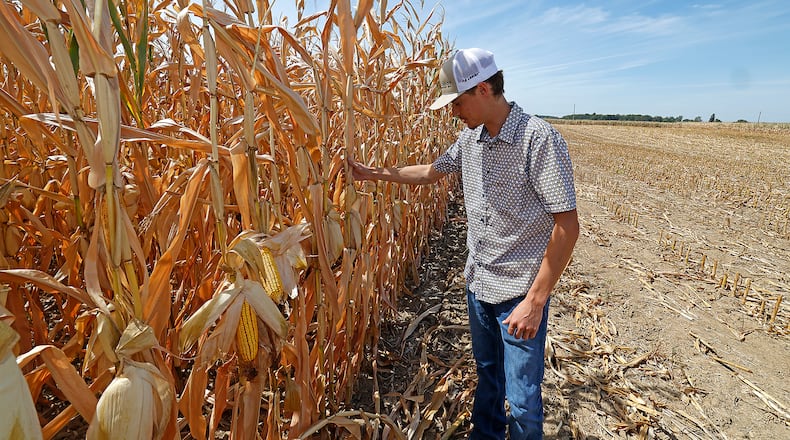We already know that this drought has affected corn and soybean production. Farmers in our area reported about 40 bushels of soybeans, while northeast Ohio reported 80 bushels per acre.
We don’t know at this point the damage to our landscape crops, except for lawns. I must emphasize that dead areas in lawns are not necessarily strictly due to drought. Insect pests have also caused damage.
This is a reminder to look for cinch bugs and bluegrass billbugs next spring in your lawn. If we see these pests, I will report back in 2025. I would hate for a newly seeded lawn to be destroyed again.
The other concern that I have mentioned time and again, but I will keep mentioning, is that newly planted trees, shrubs, and perennials should not go into dormancy dry. This leads to the dieback of branches and possibly the death of smaller plants.
I was trying to plant a few new trees and shrubs this past week and, despite the rain, the ground is still quite dry. I have holding off on planting, hoping for moisture, but I really need to get these in the ground.
Therefore, the message is this: Don’t put your hoses away for the winter yet. I saw one prediction that we may have a dry winter. This will be even worse for plants.
I plan to get these new plants in the ground, soaking them thoroughly, and then watering them as needed. After that, I will play it by ear and give them a final soaking before the ground freezes.
If you are planting spring-blooming bulbs such as tulips, daffodils, hyacinths, etc., be sure to water them in if we don’t get a good soaking rain. Remember, tulips and daffodils are planted about six to eight inches deep so moisture must reach the bulbs to initiate root growth.
Finally, we are hitting peak season for those annoying fall insects trying to live in your house this winter. We are getting calls and emails about boxelder bugs more than anything else.
Boxelder is a species of maple (Acer negundo) and the host plant for this true bug. They will also hang out on other maples and other species of trees (ash, alder, linden, etc.). They feed on the seeds of these trees.
Like all other fall invaders, boxelder bugs seek warm spots on sunny days such as the side of your house. Eventually, they find their way in.
Dr. Curtis Young, an entomologist friend of mine, noted in early summer that he saw large numbers of nymphs (young ones) on boxelders. These nymphs have become adults with the populations being high this year.
For information on many of the annoying fall pests, Joe Boggs, another entomologist friend of mine, wrote this great article: (https://bygl.osu.edu/index.php/node/2436).
Credit: Contributed
Credit: Contributed
Credit: Contributed
Credit: Contributed
About the Author



